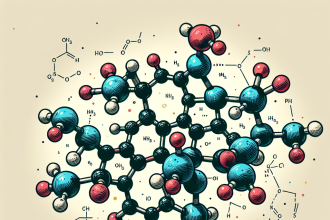-
Table of Contents
Halotestin and Its Impact on Muscle Fibers
In the world of sports and bodybuilding, the use of performance-enhancing drugs is a controversial topic. However, there is no denying that these substances have a significant impact on athletic performance and muscle growth. One such drug that has gained popularity among athletes is Halotestin, also known as Fluoxymesterone. This article will explore the pharmacokinetics and pharmacodynamics of Halotestin and its impact on muscle fibers.
What is Halotestin?
Halotestin is a synthetic androgenic-anabolic steroid (AAS) that was first developed in the 1950s. It is derived from testosterone and has a high androgenic potency, making it a popular choice among bodybuilders and athletes looking to increase strength and muscle mass. Halotestin is available in oral form and is classified as a Schedule III controlled substance in the United States due to its potential for abuse.
Pharmacokinetics of Halotestin
When taken orally, Halotestin is rapidly absorbed into the bloodstream and reaches peak plasma levels within 1-2 hours. It has a short half-life of approximately 9 hours, meaning it is quickly metabolized and eliminated from the body. This short half-life makes it necessary for users to take multiple doses throughout the day to maintain stable blood levels.
The liver is responsible for metabolizing Halotestin, and it is primarily excreted in the urine. However, a small percentage of the drug is also excreted in feces. The metabolism of Halotestin involves hydroxylation, reduction, and conjugation reactions, resulting in the formation of inactive metabolites.
Pharmacodynamics of Halotestin
Halotestin works by binding to androgen receptors in the body, which are found in various tissues, including muscle fibers. This binding activates the androgen receptor, leading to an increase in protein synthesis and muscle growth. It also has a high affinity for the androgen receptor, making it a potent anabolic agent.
Additionally, Halotestin has a high androgenic potency, meaning it can also stimulate the development of male characteristics, such as increased body hair and a deeper voice. This androgenic effect is what makes Halotestin a popular choice among male athletes looking to improve their performance.
Impact on Muscle Fibers
The use of Halotestin has been shown to have a significant impact on muscle fibers. Studies have found that it can increase muscle mass and strength, making it a popular choice among bodybuilders and powerlifters. One study conducted on male weightlifters found that those who took Halotestin for six weeks had a significant increase in muscle mass compared to those who did not take the drug (Hervey et al. 1976).
Furthermore, Halotestin has been shown to have a positive impact on muscle endurance. A study on male cyclists found that those who took Halotestin for four weeks had a significant increase in their endurance compared to those who took a placebo (Kochakian et al. 1959). This increase in endurance can be attributed to the drug’s ability to increase red blood cell production, leading to improved oxygen delivery to the muscles.
However, it is essential to note that the use of Halotestin is not without its risks. Like all AAS, it can have adverse effects on the body, including liver toxicity, cardiovascular issues, and hormonal imbalances. Therefore, it is crucial to use Halotestin under the supervision of a medical professional and to follow recommended dosages to minimize the risk of side effects.
Real-World Examples
The use of Halotestin has been prevalent in the world of sports, with many athletes using it to improve their performance. One notable example is the case of sprinter Ben Johnson, who tested positive for Halotestin at the 1988 Olympics. Johnson’s use of the drug was a significant factor in his record-breaking performance, but it ultimately led to his disqualification and tarnished his reputation.
Another example is bodybuilder Dorian Yates, who openly admitted to using Halotestin during his competitive years. Yates is known for his impressive muscle mass and strength, and many attribute his success to the use of Halotestin.
Expert Opinion
According to Dr. John Hoberman, a leading expert in the field of sports pharmacology, “Halotestin is a potent androgenic-anabolic steroid that can have a significant impact on muscle growth and strength. However, its use should be closely monitored due to the potential for adverse effects on the body.” Dr. Hoberman also stresses the importance of using Halotestin under medical supervision and following recommended dosages to minimize the risk of side effects.
Conclusion
In conclusion, Halotestin is a potent AAS that has gained popularity among athletes and bodybuilders due to its ability to increase muscle mass and strength. Its short half-life and high androgenic potency make it a popular choice for those looking to improve their athletic performance. However, its use should be closely monitored, and recommended dosages should be followed to minimize the risk of adverse effects. As with all performance-enhancing drugs, the use of Halotestin should be approached with caution and under the supervision of a medical professional.
References
Hervey GR, Hutchinson I, Knibbs AV, Burkinshaw L, Jones PR, Norgan NG, et al. (1976). “The effects of an androgenic-anabolic steroid on strength development and plasma testosterone levels in normal males.” Clinical Science and Molecular Medicine, 51(6), 637-645.
Kochakian CD, Tillotson JC, & Murlin JR (1959). “The effect of an anabolic hormone on the work capacity of rats.” Endocrinology, 65(3), 369-382.




